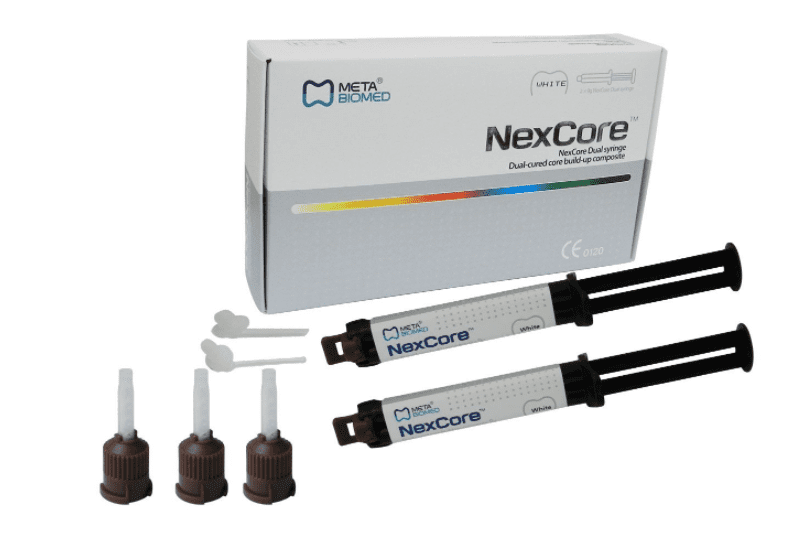Meta Nexcore Core Build Up Material Post adhesions and core build-up in restoration Suitable viscosity and flow for post cementation and core build-up Dual curing: light-curing and self-curing are possible, so no need to worry about incorrect resin polymerization . When there isn’t enough natural tooth structure to support a crown, core build-up material is there to serve as a dentin replacement. These materials form a solid structure to support a crown following root canals or other procedures requiring large, deep preps. There is a wide range of options when it comes to choosing a core build-up material, but the dual cure varieties offer the assurance that any material too deep to be light-cured will still properly set up after self-curing. Here is a look at several of the dual cure core build-up materials currently available.
Benefits
- Suitable viscosity and flow for post cementation and core build-up
- 3 shades (tooth, white and ceramic restoration blue: metal restoration)
- Suitability for cutting (flexural modulus: NexCore 14.2GPa)
- Biocompatibility (ISO10993)
- Easy-to-mix by auto-mixing type, Direct injection: Intraoral-tip, Endo-tip
Areas of application
- Post-adhesions and core structures in restorations
Composition of physical property parameter
Competitor ACompetitor BNexCore
Composition
| Barium glass, ytterbium(III) fluoride, pyrogenic silicic acid Bis-GMA, TEGDMA |
Physical properties
| Working time | 1:50 ~ 2:2a0 min |
| Setting tiame | 4:00 ~ 5:00s min (self-curing) 20 ~ 40 s (light-curing) |
| Flexural strength (light-curing) | 20 ~ 40 s (ligsht-curing) |
| Water resorption, solubility | 16,5/ 2,3 sμg/mm² |
| Radiopacity | Optical density corresponds to the optical density on a 4.2 mm alsuminium step wedge |
| Shade anad colour stability | No change in colour and identical to the shade guide. |
Flexural strength modulus – polymerization shrinkage rate
Radiopacity


















